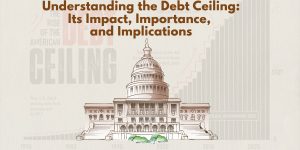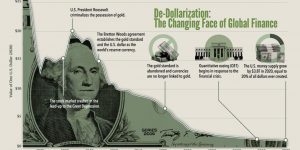-

-

-

-

-

-
-

-

-

-
-
Cybersecurity issues have become front page news virtually every week – breaches, fraud, theft and a whole host of other cyber crime events read like the police blotter from a large metropolitan city where criminals run rampant.
At the same time, regular reporting on increased cyber defense spending, more info-sharing and collaboration, new technical solutions, businesses getting serious about cybersecurity, governments legislating cyber safety through governance and regulation, and a flurry of other recent activities designed to keep us all safer have also made their way to the front of our everyday news.
It would seem to be something of a contradiction. Each week, new stories of cyber woe. Each week new reports of improved diligence in the fight.
This contradiction brings on the kind of cognitive dissonance that won’t go away until you’re able to fully analyze what’s happening between what’s being done to combat cybercrime and what we’re all seeing each week in the news. What it comes down to is that sooner or later, we’re all victims of cybercrime and it seems obvious that what we’re doing now isn’t working perfectly.
Having spent the bulk of my career working in and around cybersecurity and intelligence domains, I realized recently that I’d never really looked at the problem from the perspective of businesses that are the chief consumers of cybersecurity solutions.
So, with a few years of fresh data on hand collected from meeting each week with companies and their cyber teams to exchange info and talk about security functions inside their businesses, I set out to comb through the info I’ve collected in an attempt to at least shed some light on the dilemma.
What follows below are just a few observations gleaned from my experiences that, for me at least, help lay the foundation for an explanation or two – and maybe a way for us to help ourselves. Be warned, though! Not all of it is particularly pretty. But, then again, neither is the cyber problem itself.
-
-
-
Yes most of the politicians coming into power misuse the power of people against the people who supported them in election. It is our nation evil fate that every politician use his power misuse against country and its people. This situation is all over the world.
In every country misuse of power is made but especially against the poor not against the rich because the persons elect the candidate behind the scene that is why the powerful politicians cannot make laws against them at any cast.
If we are going to resolve the closed-heartedness of our politics and our politicians, we need to find the root. And we need to really understand it so we can do something truly constructive with it and about it.
I say that Politicians who cynically misuse the power of the state for personal or political benefit are a far greater threat to democracy than criminals, even organised gangs, write Gary W Crooke and Tony Fitzgerald, who were responsible for the Fitzgerald Inquiry.
I see law and order crisis in all countries as one writer has said that “Law and order” is a favourite issue for ambitious Queensland politicians seeking publicity and political advantage.
The community wants to be safe, and is understandably angry at violent thugs, organised criminal gangs, the sexual abuse of children, murder, rape and a wide range of other anti-social behaviours. A perceived “law and order” crisis allows a government to bolster its electoral support through tough talk, a feigned macho image and extreme laws.
-
-

-

-

-

-

-

-

-

-

-
For those with extreme sports interest and for those with great liking for activities way beyond normal.
-
A triathlon is a multiple-stage competition involving the completion of three continuous and sequential endurance disciplines. While many variations of the sport exist, triathlon, in its most popular form, involves swimming, cycling, and running in immediate succession over various distances.
To accomodate all different skill levels, there are several different distances for triathlon races. Sprint distances vary from race to race, but the other distances are consistent with the lengths shown in the table below.
The Half and Full distances are commonly referred to as Half Ironman and Ironman distances respectively. Half Ironman races can also be referred to as Ironman 70.3’s, with the number 70.3 representing the total mileage of the race.
-
- Load More









